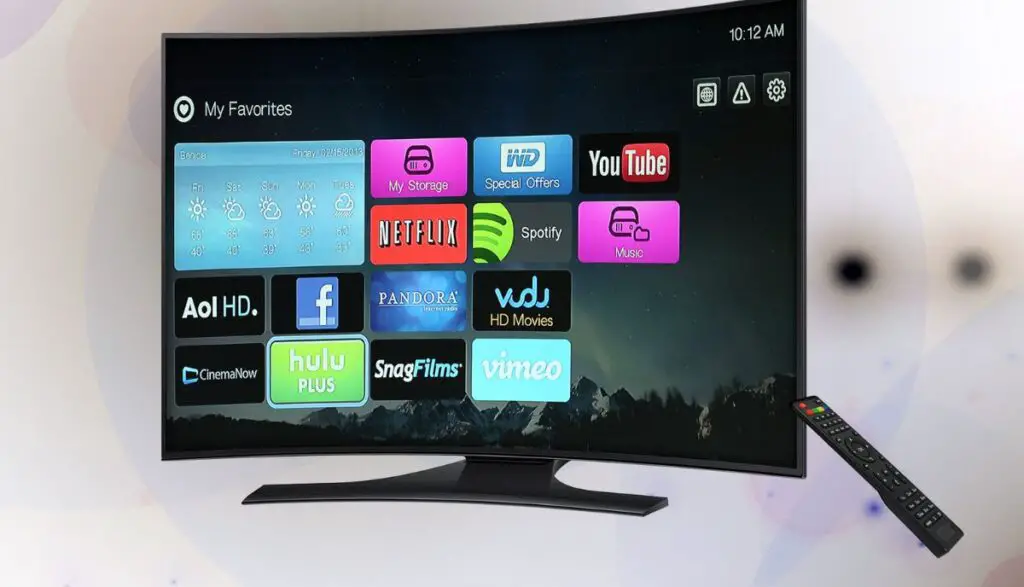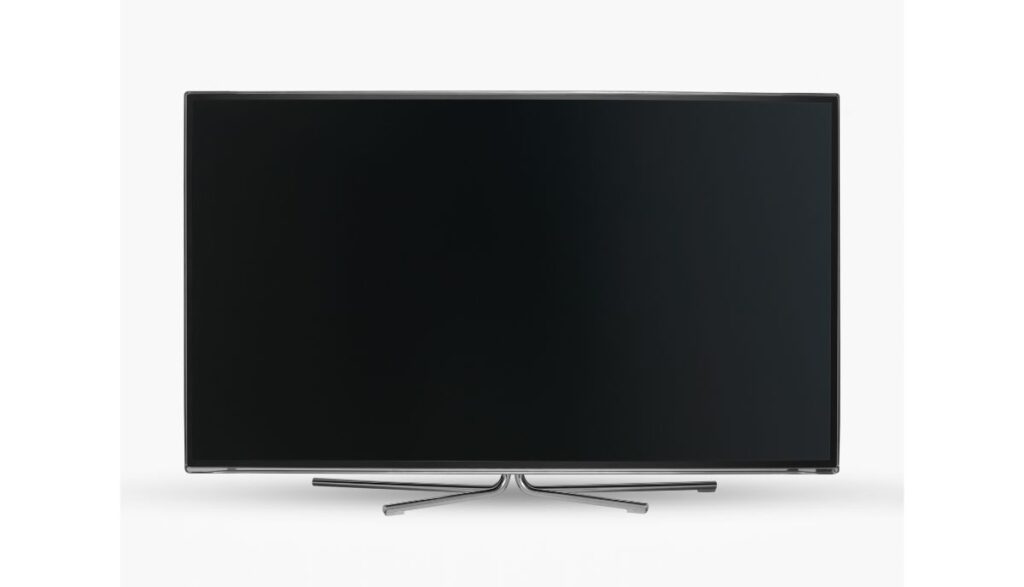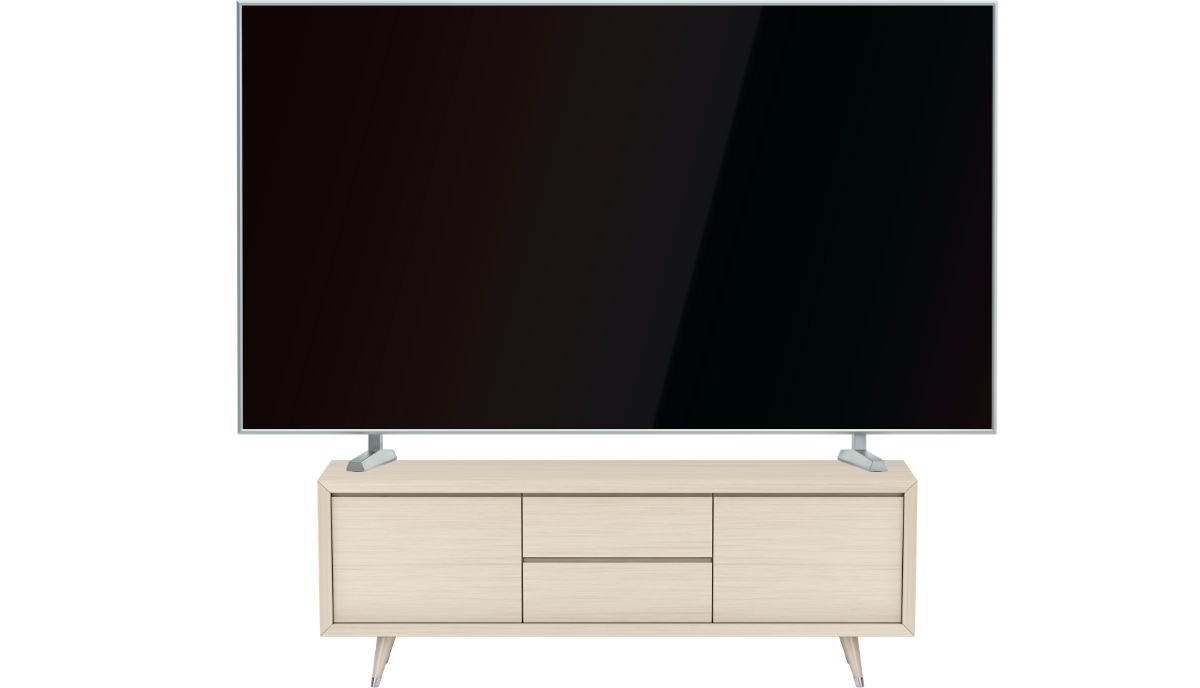Yes, a TV stand can be smaller than the TV, but it comes with considerations. Ensure the stand can support the TV’s weight to prevent stability issues. The TV’s width, location, and aesthetic factors should be considered. Following recommended size guidelines and choosing a slightly larger stand enhances safety and appearance.
| Will A 50-Inch TV Fit On A 42-Inch Stand? | YES |
| Will A 55-Inch TV Fit On A 50-Inch Stand? | YES |
| Will A 60-Inch TV Fit On A 55-Inch Stand? | YES |
| Will A 65-Inch TV Fit On A 55-Inch Stand? | YES |
| Will A 70-Inch TV Fit On A 65-Inch Stand? | YES |
| Will A 75-Inch TV Fit On A 65-Inch Stand? | YES |
Don’t take the information above at face value because it doesn’t account for the TV’s weight or the TV stand’s weight limit. A 42-inch Stand may accommodate one 50-inch TV and then collapse under the weight of another.
1). TV Weight
Consumers typically favor large TV stands because small TV stands seem frail. You expect them to collapse under the weight of a larger, heavier TV. This is less of a concern for modern TVs because of their compact, lightweight constructions.
Nonetheless, a large TV can break a small Stand if the TV exceeds the Stand’s weight limit. A broken TV stand is a danger to the TV.
2). TV Width
A small TV stand creates a stability issue. You can ignore slight differences between the TV’s width and its Stands. Problems arise when the TV is significantly larger because it is less likely to balance on the stand.
If several inches of a TV’s sides are sticking out from the Stand, don’t be surprised if it tips over. Even a tiny nudge can send it crashing to the ground. Manufacturers publish the weight limits for TV stands but rarely recommend width limits. They expect consumers to apply common sense by keeping massive TVs away from extremely narrow Stands.
3). TV Location
Where do you intend to position the TV? A large TV on a smaller stand near the wall is relatively safe because the wall provides additional support. This also applies to Stands with furniture in the immediate vicinity that enhances the TV’s stability.
It should be noted that the location affects the volume of traffic. For instance, a large TV on a small Stand in a hallway is more likely to fall despite the support from a wall because of the increased traffic. Someone is bound to knock the TV off the Stand while walking down the hall.
4). Aesthetic Considerations
Did you know that small Stands holding large TVs are ugly? A TV whose sides stick out from the Stand is an eyesore. The reverse produces the opposite effect. A large Stand with a smaller TV creates a balanced look. It blends into the room’s decor rather than sticking out.
Then again, some people don’t care about the look. They only want to know whether the size difference will affect the TV’s safety.
What Are The Standard Size Guidelines For Choosing A TV Stand In Relation To The TV’s Dimensions?

Amish Direct has a picture of a TV on a Stand. They expect the TV to sit at the center of the Stand, and their picture shows as much. They want consumers to keep roughly three inches of space between the TV’s edge and the Stand’s edge.
This creates a balanced look. You can also trust the Stand to safeguard the TV. The device is unlikely to tip over unless someone gives it a good shove. Then again, Amish Direct has also admitted that a TV overhanging on each side is not a bad thing.
Overhanging happens when a large TV sits on a small Stand. This doesn’t mean you can pair a large TV with any Stand you encounter, regardless of the size. Some Stands are simply too small to keep your TV upright. The following considerations should guide your hand:
1). Finding The TV Size
Most people don’t see the point in measuring the TV width. After all, the manufacturer reveals this information. However, there’s a difference between the screen size and the TV size. A 32-inch TV is not actually 32 inches.
According to Samsung, manufacturers base their measurements on the diagonal length of the screen (from the upper-left corner to the lower right-hand corner). If you want to accurately estimate your TV’s width, Insider recommends measuring the actual TV, including the plastic frame surrounding the screen.
When you ignore the frame and bezel, you discount three or more inches, which may affect your selection of a TV stand. Measure the TV from edge to edge to get the correct width.
2). Finding The Height
You should keep the TV at eye level to prevent neck and eye strain. An adjustable Stand will give you peace of mind because you can alter the height to suit your needs. If you prefer a non-adjustable Stand, the height measurements are vital.
Get measuring tape and determine the distance between the floor and the sightline of the average viewer in your home. Subtract half the TV’s height to get the optimal viewing height. Gear Patrol recommends 41 inches from the floor to the TV screen’s center.
The narrower the Stand, the shorter it should be. The reverse is also true. You can afford to increase the height of a Stand whose size exceeds the TV’s width significantly.
3). Understanding The Measurements
When hunting for TV stands, make sure you know what you’re looking for. Experts typically use the following classifications to categorize TV Stand sizes:
- Large: 74, 76, and 85 inches.
- Medium: 64 and 70 inches.
- Small – 42, 54, 60 inches.
However, you can’t expect every retailer to follow this scheme. For instance, they may classify 70-inch TV Stands as ‘Large.’ Therefore, rather than asking for a small, medium, or large TV stand, specify the measurements to avoid confusion.
And if you don’t understand what the measurements above mean in a practical sense, ask for pictures of the Stands (if you can’t see them in person). Better yet, apply the Amish Direct rule. Tell the retailer the size of your TV and ask them whether it will leave three inches on either side when it sits at the center of the Stand.
Can A Smaller TV Stand Still Adequately Support A Larger TV Without Stability Issues?
It depends on the difference in size. The bigger the difference, the greater the risk of the TV tipping over.
Keep an eye on the mounting mechanism, especially if you want to attach the TV to the wall. A TV’s size doesn’t say anything about its weight. Make sure the mounting brackets are big and strong enough to accommodate the TV’s size and weight.
Are There Any Recommended Weight Or Size Limits For TV Stands In Relation To The TV’s Size?

- Small Stands (42, 54, and 60 inches) can hold TVs ranging between 34 and 63 inches.
- Medium Stands (64 – 70 inches) can hold TVs of 55 – 73 inches.
- Large Stands (74, 76, and 85 inches) can hold TVs of 63 – 73 inches.
The safest option is to select Stands two or three inches wider than the TV they will hold. Ultimately, the larger the Stand, the better. The recommendations above are loose suggestions.
The industry doesn’t have strict standards governing TV stand sizes and weight limits. Manufacturers expect you to base your selection on the TV’s width and weight. At best, you can trust them to provide the TV Stand’s weight limit because they don’t want you to exceed it.
What Are The Potential Consequences Of Using A TV Stand That Is Smaller Than The TV It Supports?
- Your primary concern is the TV’s safety. A TV that is too big will fall off a narrow Stand, especially if it sits in locations with a lot of traffic. Eventually, someone will accidentally nudge it off the Stand.
- Even if you lean the TV and its Stand against a wall, a small, frail Stand is more likely to buckle under the weight of a larger, heavier TV.
- Small Stands with large TVs are unattractive. They stand out in the worst way possible.

